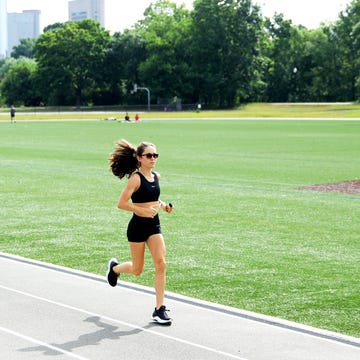For runners, community is everything. Even though people think of running as an individual sport, having a community of fellow athletes around you is important for so many reasons. Running as part of a community gives us built-in accountability, motivation, knowledge, and even safety.
For those of us who started running as kids, we had our communities handed to us by way of school teams. We had a set time to report to practice every day, we had accountability to our coaches and teammates, we had short-term goals set for us every day by our coach, and we had medium and long-term goals in the form of races and seasons.
It’s easy to take all of these things for granted when you’re in it—it often isn’t until our school days are over and we’re on our own that we come to really appreciate what that team meant for us. This is why so many people lose touch with running even if they loved the sport in high school or college: because the intangible benefits of being part of a community of runners makes a huge difference in a person’s ability to enjoy the sport and chase their goals.
Leading up to my 2016 Olympic race, I was lucky enough to be part of a professional team in Eugene, Oregon. It took the effort, belief, and support from my team to help make my Olympic dream happen. But these days, my life looks different. I recently moved to Los Angeles where I manage training on my own with a remote coach. I’m happy with the move, but it has meant that I’ve needed to create my own running community here. That process has given me a new appreciation for exactly why a community is so helpful.
One, community is helpful for accountability. When I first got to LA, I wasn’t sure what time I would head out the door to run, mostly because I didn’t have a running practice time to get to. It was up to me. This freedom was nice, but it was also draining to my willpower to decide each and every day when I would step out the door to train. Then I connected with a woman who became my partner and we started to meet up for runs. Knowing that I had coordinated a plan in advance and that somebody else was counting on me to show up made getting out the door so much easier.
Two, performance! Community feels like a super supportive word, and it is, at its core, about support. You expect that having a running community indicates that someone will be there cheering or maybe literally by your side during a workout or run. But what you don’t expect is the huge level of performance boost. When I do a long tempo run or short track workout with my training partner, Ashlee, I feel more capable, and I run faster and farther than I might alone.
Runner's World has partnered with Garmin to form the Runners Alliance. Running Charities to Support This Year.
Third, knowledge. Community gives you a larger reservoir of information to draw from—from learning about new trails to strategizing recovery plans, community offers the benefit of a body of knowledge that can lift you to even greater heights.
Four, safety. Community gives you the practical element of safety, especially if, like me, you often run before the sun rises (when it is still dark out) to escape the LA heat. On these early mornings, or when I’m on a remote trail, I always run with my training partner. We feel safer and we are literally safer together. And on a more metaphorical note, community also gives you the feeling that you’re safe chasing a dream, How to Create a Running Safety Plan.
Runners seek out communities like moths seek out light, and communities don’t always need to look like formal teams. It happens naturally—I know many adults who discovered running later in life because they had a group of friends who all decided to train for a marathon together. That is a community: there is shared accountability and motivation. And likely, there is a text group going on where they share their tips–knowledge–and commiserate with each other – safety, in the form of confidence.
Taking it one step further, joining up with running groups where people meet in person enhances the benefits of community even more. It’s easy to have accountability when you know someone is waiting for you early in the morning at a park. It feels good to be pushed physically when your group is pulling ahead even though you’re tired. And it feels safe to run with a group of people, especially if you need to run super early in the morning or at night.
Finding a community of fellow runners can take effort, especially as an adult who is reconnecting with the sport or discovering it for the first time. But the effort is always well worth it, and will make us happier, more effective, and safer in the long run.















